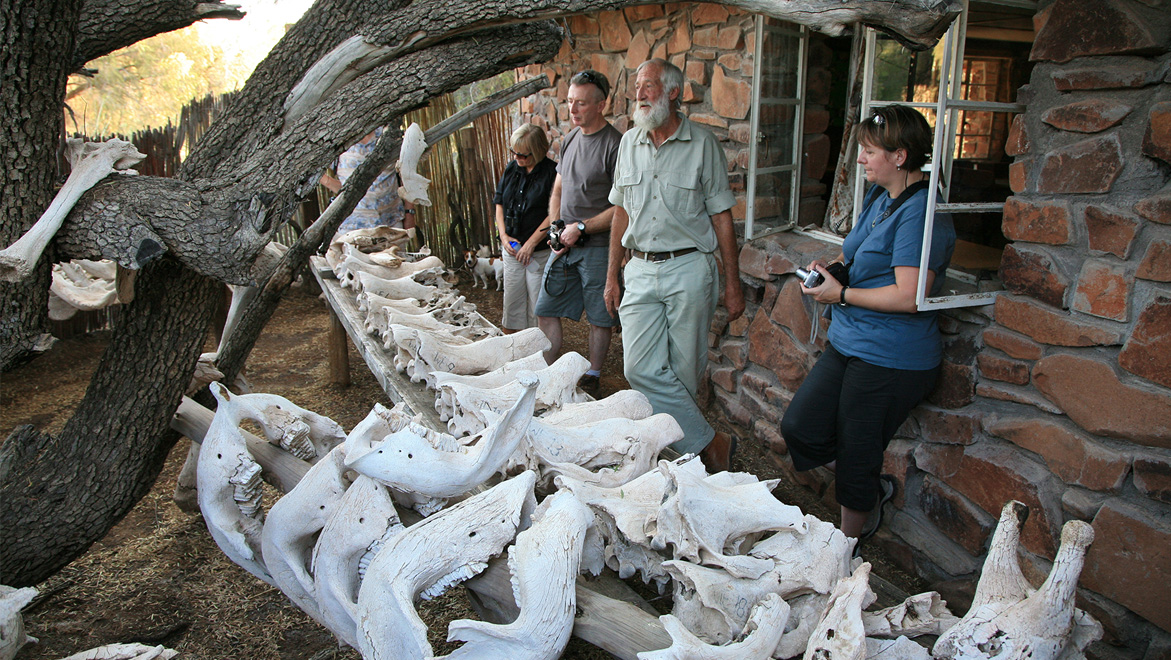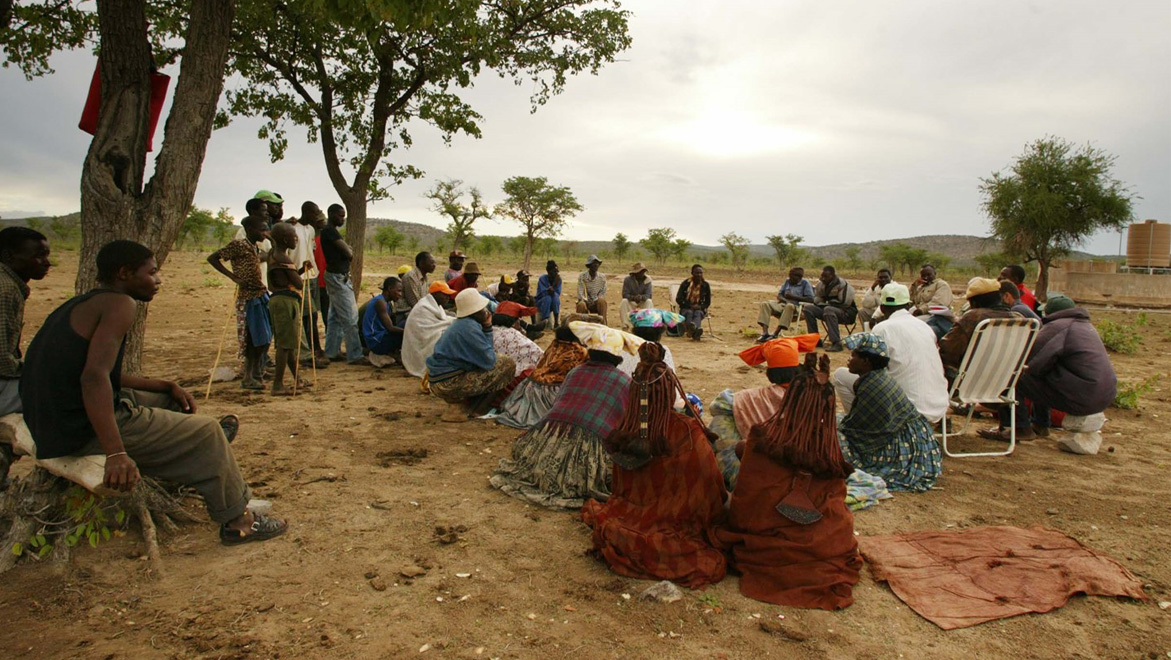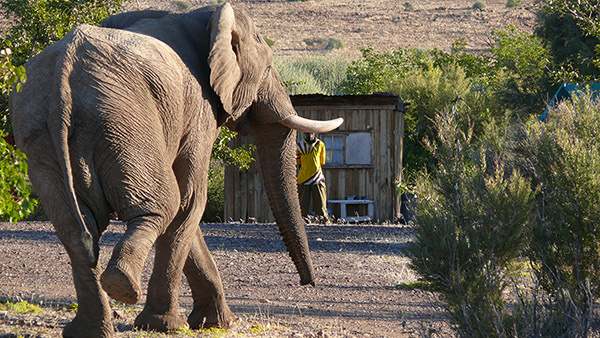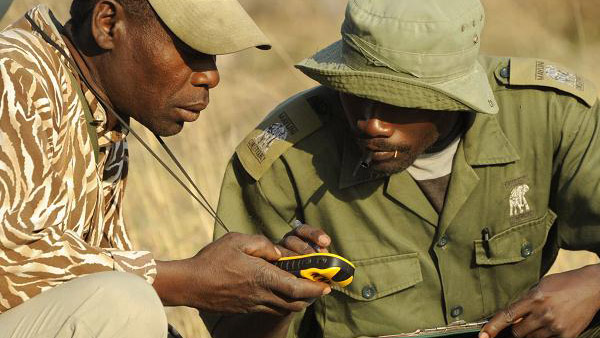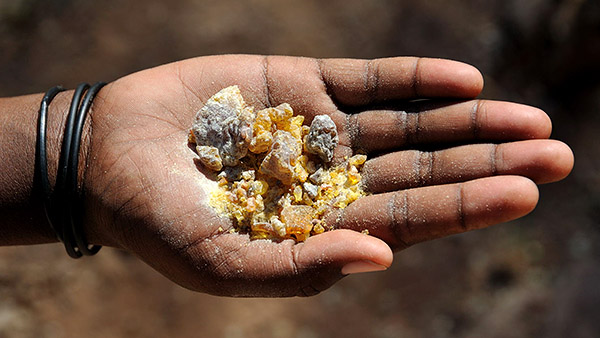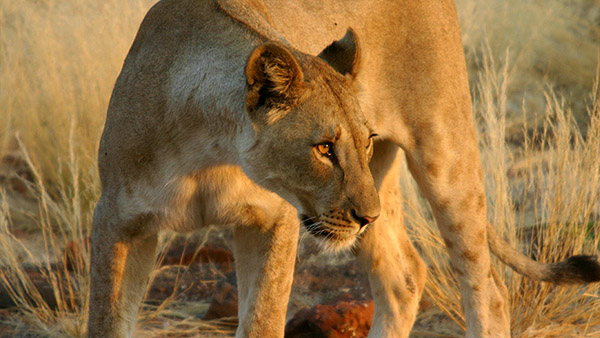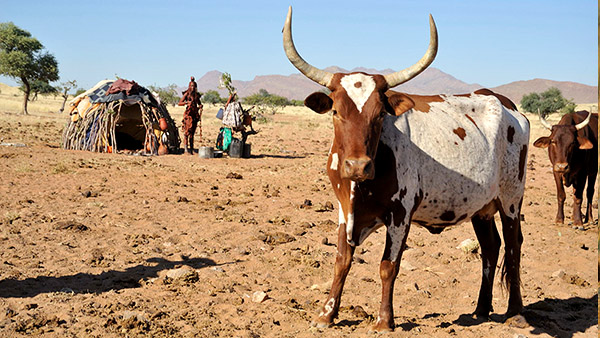North-western Namibia’s rich and diverse wildlife was almost lost in the early 1980s to massive commercial poaching, illegal subsistence hunting and severe drought. Only remnant populations of black rhino, desert adapted elephant and most other species remained when the first community-based conservation efforts started in 1983. Another long-term drought is just ending, with huge domestic stock and wildlife losses, animals dying of starvation. Enough wildlife has survived for numbers to recover rapidly.
Some conservation and tourism history in Kunene
Now, after more than two decades of virtually no illegal hunting, Namibia, like its neighbors, is experiencing elephant poaching in the north-eastern Zambezi region and rhino poaching in the north-west. This is being fueled by a voracious Asian market for ivory and horn at soaring prices per kilo.
Community-based conservation – and tourism that directly benefits local people - has never been more relevant.
During the poaching crisis of the 1980s orthodox conservation circles regarded communities as the problem. Memories are short and at first when Namibian rhino poaching re-started the official response was to focus on catching poachers using military-type approaches. Once more communities were viewed with suspicion. On the other hand, community-based approaches see partnerships with local leaders and direct involvement of local people as the essential part of the solution – to stopping poaching as well as catching poachers.
In early 2015 more than 30 Kunene traditional leader were taken on a five-day fact finding mission about current rhino poaching, thus re-igniting community commitment to conservation. Since this IRDNC and partners initiative, with logistic support from CSN, a number of arrests have followed. Good partnerships between the police, the Ministry of Environment and Tourism and the local NGOs, working closely with conservancies, bodes well for the future.
In spite of war and a politically hostile climate in the 1980s, the community game guard network of men appointed by their own leadership in a conservation paradigm breaking pilot project which grew into the Non-Governmental Organization Integrated Rural Development and Nature Conservation (IRDNC), quickly helped bring poaching under control. They did this not only by catching poachers but by seeking to stop poaching.
People ceased illegal hunting activities because of the sense of ownership over the wildlife that was nurtured and the vision that if conserved, wildlife would one day become a foundation for community development. This was the forerunner to what is today known as community-based natural resource management (CBNRM). Where CBNRM was being applied in the north-west wildlife numbers soared, demonstrating that this African approach to conservation works in rural Africa.
At independence in 1990 the new Namibian government embraced CBNRM and set about consulting their people – especially those who still lived with wildlife – about new policy and legislation. CBNRM is today entrenched in Namibia’s national development plans.
For more information on Namibia’s national conservancy program: www.irdnc.org.na; www.nacso.org.na
Also at independence the WWF family became involved in what would grow from a small pilot project in Kunene Region to a national award-winning CBNRM program which today involves one in five rural Namibians.
After national consultations the new Namibian Government passed enabling legislation in 1996 to give communal area dwellers the same rights to form conservancies as only freehold farmers had previously enjoyed. This provides a legal mechanism for income and benefits to flow to conservancy members from tourism and other forms of wildlife usage.
Since then more than 80 self-defined communities have thus elected to manage and conserve their wildlife in return for conditional consumptive and non-consumptive rights over it. At their request, government has re-introduced 14 valuable species – more than 3 700 animals – onto 15 conservancies. These include black rhino, eland, giraffe, blue wildebeest, roan, red hartebeest, sable and black-faced impala and zebra. More such translocations are planned to facilitate the slow process of wildlife repopulating areas where they were totally wiped out in the 70s and early 1980s.
Given the cost of living with wildlife – cattle, goats, sheep, donkeys and horses killed by predators, elephant damage to water points and gardens, competition between wildlife and domestic stock over water and food, injury and death to humans – this is a remarkable situation. Namibia’s communal area farmers, the government of Namibia, NGOs and long-term supporters such as WWF deserve major credit for developing and implementing this African version of sustainable conservation.
By boosting the income of the five owner conservancies, and paying traverse fees in any other conservancy we visit, we are directly contributing to livelihood enhancement of conservancy members as well as supporting sustainable natural resource management.
Namibia is far ahead of many other African countries in its approach to conservation. In the 1980s we opened the door for communities to start benefiting from their wildlife and spectacular scenery, with enabling legislation enacted by mid-1990.
The international conservation community has recognized Namibia’s achievements and awarded the implementers of the national community-based conservation program some of the world’s top conservation prizes, including
2015 Prince William lifetime conservation award to Garth Owen-Smith,
Two United Nations Global 500s and the US Goldman Grassroots Environmental Prize for Africa, both of which went to Garth Owen-Smith and Dr Margaret Jacobsohn.
Dr Sam Nujoma, Namibia’s founding president received WWF’s Friends of the Earth award in 1998 when the first four communal area conservancies were registered; the Republic of Namibia won a second Gift to Earth award in 2013.
The program, including several conservancies and a residents’ trust (the equivalent of a conservancy formed by people who live inside a national park) have received more than 25 international and Namibian conservation and development awards.
